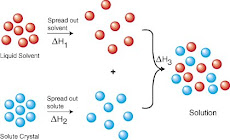What are quat-based hand sanitizers? How do they work?
Quat-based hand sanitizers are made with quaternary surfactants that destroy the cell integrity of bacteria and germs.
Quat-based sanitizers have additives to increase their antimicrobial effectiveness.
Quats are Quaternary Ammonium Compounds (QUATS) and the more common ones used are benzethoniumchloride (BEC) or benzalkoniumchloride (BZK). QUATS are typically found in hard surface type sanitizing applications – inanimate, nonliving surfaces. This versus alcohol which is used in sanitizing applications on living tissue, i.e. skin.
Studies have shown that QUATS are more irritating to the skin and they are not good for the environment. Further to this, the FDA has not approved the use of QUATS as a leave on application; they must be rinsed off. In recent years, the FDA has been enforcing its rulings requiring companies who manufacture QUAT based products to remove or change claims that market the product as a leave on hand sanitizer.
QUATS work by breaking down the cell walls and ultimately killing the germ, thus contact time is important to ensure kill. Alcohol (at the FDA recommended level of at least 60 percent) kills germs on contact which usually means within the 15 seconds that it was tested to. Currently, the FDA guidelines state that hand sanitizers must contain at least 60 percent ethyl alcohol and BSCs should look for this on the label as a standard. And, as of this date, the FDA has not approved non-alcohol based hand sanitizers for use as leave-on products; again, they must be rinsed off.
Do non-alcohol-based hand sanitizers, such as quat-based sanitizers, have benefits over alcohol-based products? Any facilities I should or should not use quat-based sanitizers?
Yes, quat-based hand sanitizers are not flammable, do not sting on cuts and chapped hands and have a pleasant scent versus alcohol based sanitizers. Schools and prisons are ideal for quat-based sanitizers, where the dangers of alcohol based products may be a concern.— Dan Renner, Director of Marketing, Kutol Products Co., Sharonville, Ohio
Quat-based products have a greater risk of causing contact allergies and can leave a sticky residue on skin. Additionally, these sanitizers can become more easily contaminated. Depending on the percentage of Ethyl Alcohol in the product, alcohol-based sanitizers have have been proven to kill 99.99 percent or more of (bacteria) micro-organisms.
— Katharina Versluis, Marketing Manager, Gent-l-kleen Products Inc., York, Pa.
Because the FDA has not approved QUATS as a leave on product, together with issues of less desirable skin compatibility and environmental friendliness, we do not recommend sanitizers that contain these ingredients.
— Lori Huffman, Head of Marketing, North America, STOKO An Evonik Brand, Greensboro, N.C.










































